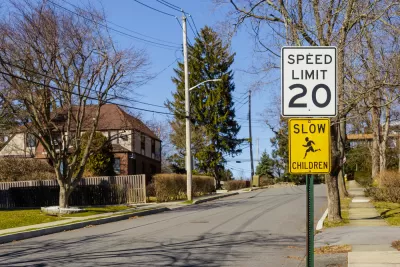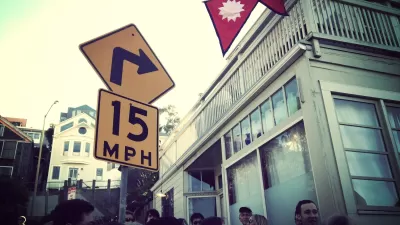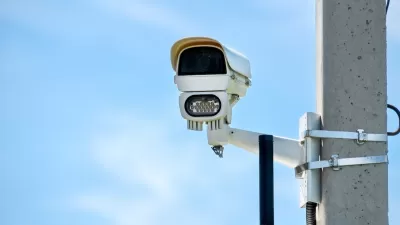Thanks to a state bill, California cities can reduce speed limits on city streets by 5 miles per hour to improve traffic safety.

“In January, [California] Assembly Bill 43 went into effect giving local governments the authority to reduce speeds by 5 mph on smaller roads that have lower speed limits and car volumes. The bill creates a new road designation titled ‘business activity district’ for streets with speed limits 30 mph or under,” writes Jana Kadah in San Jose Spotlight.
Now, the San Jose City Council approved speed reductions on some of the city’s streets. “The locations, which include Evergreen Village Square, portions of Almaden Avenue, Jackson, Post, Santa Clara and Willow streets, will require drivers to reduce speeds from 25 to 20 mph.”
According to the article, “Traffic fatalities reached record levels last year with 60 deaths, and this year is on track to exceed that. In the first three months of 2022, 24 people died — three times higher than the nine who died by the end of March 2021.” Reducing speed limits can help drivers avoid crashes and reduces the chance of pedestrian deaths.
In addition to lower speed limits, “These roads must have street parking, traffic signals or stop signs every 600 feet, uncontrolled crosswalks and at least 50% of the adjacent property has retail and dining that opens directly onto the sidewalk,” according to Laura Wells, assistant director of the department of transportation, limiting which streets the city can select. “Wells said some of San Jose’s more dangerous corridors may also see speed reduction, but it won’t be for a while. AB 43 allows cities to change speed limits on roads with high injury rates and near vulnerable populations, but the criteria of that law is still being defined by Caltrans.”
FULL STORY: New San Jose speed limits applauded, but still fall short

Alabama: Trump Terminates Settlements for Black Communities Harmed By Raw Sewage
Trump deemed the landmark civil rights agreement “illegal DEI and environmental justice policy.”

Planetizen Federal Action Tracker
A weekly monitor of how Trump’s orders and actions are impacting planners and planning in America.

The 120 Year Old Tiny Home Villages That Sheltered San Francisco’s Earthquake Refugees
More than a century ago, San Francisco mobilized to house thousands of residents displaced by the 1906 earthquake. Could their strategy offer a model for the present?

In Both Crashes and Crime, Public Transportation is Far Safer than Driving
Contrary to popular assumptions, public transportation has far lower crash and crime rates than automobile travel. For safer communities, improve and encourage transit travel.

Report: Zoning Reforms Should Complement Nashville’s Ambitious Transit Plan
Without reform, restrictive zoning codes will limit the impact of the city’s planned transit expansion and could exclude some of the residents who depend on transit the most.

Judge Orders Release of Frozen IRA, IIJA Funding
The decision is a victory for environmental groups who charged that freezing funds for critical infrastructure and disaster response programs caused “real and irreparable harm” to communities.
Urban Design for Planners 1: Software Tools
This six-course series explores essential urban design concepts using open source software and equips planners with the tools they need to participate fully in the urban design process.
Planning for Universal Design
Learn the tools for implementing Universal Design in planning regulations.
Clanton & Associates, Inc.
Jessamine County Fiscal Court
Institute for Housing and Urban Development Studies (IHS)
City of Grandview
Harvard GSD Executive Education
Toledo-Lucas County Plan Commissions
Salt Lake City
NYU Wagner Graduate School of Public Service





























